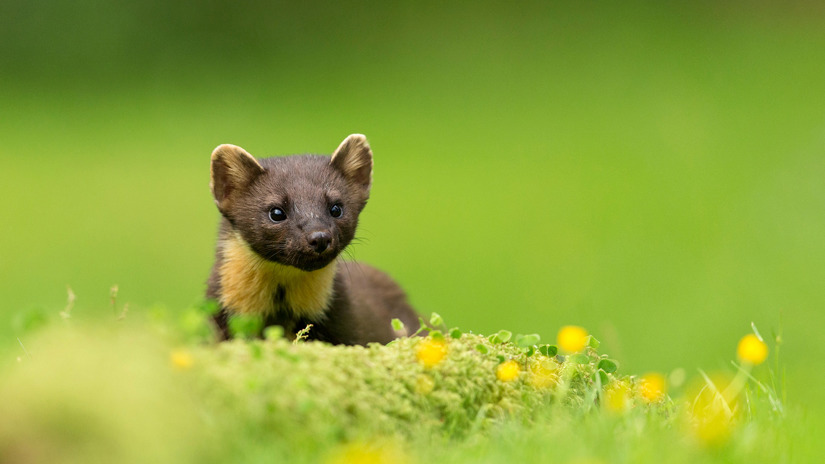
Pine marten reintroduction: how we're helping and where to find them
Once persecuted to extinction, find out how we're helping pine martens make a welcome return to the UK's woods.
Read the story
Content editor
Have you been lucky enough to encounter a stoat or weasel on a woodland walk?
These mini predators are hard to spot and most sightings are no more than a fleeting glimpse. With the two species looking very similar, this can make it tricky to tell them apart. Here’s a handy guide to help you out.
The easiest and most reliable way to tell a stoat (Mustela erminea) from a weasel (Mustela nivalis) is the tail. A stoat’s tail is around half the length of its body and ends in a bushy black tip. A weasel’s tail is short and stubby by comparison and solely brown in colour.
Other subtle differences to look out for include:
Stoats and weasels are found throughout mainland Britain. However, Ireland is solely home to stoats where, just to confuse matters, it is often called a weasel.
Both species live in woodland and most other habitats as long as there is sufficient cover to hide in and plenty of rabbits, rodents and birds to eat.
A preference for hunting rabbits means you are perhaps more likely to spot a stoat in the open. But, like weasels, they spend most of their time under cover to avoid larger predators such as foxes and birds of prey.
Closely related, stoats and weasels are members of the mustelid family. Here is a brief guide to identifying the other mustelids found in the UK:
Two mustelids people sometimes confuse are the otter and mink. Both species are semi-aquatic, spending much of their time in water. However, it’s easy to tell the difference when you know what to look for:
Mink are not native to the UK. A wild population became established in the 20th century following escapes and releases from fur farms. This has had a damaging impact on some native species, particularly the water vole.
However, mink are now thought to be in decline. This is partly due to the ongoing recovery of the otter population. Otter numbers are estimated to have grown by 50% since 1995 thanks to legal protection and reduced river pollution. With similar habitat preferences, it’s thought the larger otter out-competes the smaller mink.
Like the otter, legal protection has helped polecat numbers grow in recent decades. The species was hunted to extinction everywhere bar mid-Wales by the end of the 19th century, but has steadily been reclaiming its former haunts.
Key identification features include:
Did you know the polecat is the wild ancestor of the domestic ferret and will hybridise with escaped ferrets? Feral ferrets are variable in appearance and can range from near white to being much like polecats. Hybrids are difficult to tell from true polecats without close observation.
Badgers are unmistakable, but you may not have realised they are also mustelids. The species is the largest member of the family in the UK. A male badger may weigh up to 17kg; that’s as much as 250 female weasels!
Our final mustelid is the pine marten. Key identification features include:
Pine martens had disappeared from most of the UK by the 20th century due to hunting and destruction of their woodland habitat. As a result, the majority of the population is now found only in Scotland. Thankfully numbers are increasing here, but the species’ situation in England and Wales remains precarious. Only a handful of isolated populations are left in both countries.

Once persecuted to extinction, find out how we're helping pine martens make a welcome return to the UK's woods.
Read the story
Primordial landscapes, tangled branches, breathtaking wildlife and miles of woodland trails. From the countryside to cities, we care for thousands of woods throughout the UK, all free to visit.
Find a wood near you